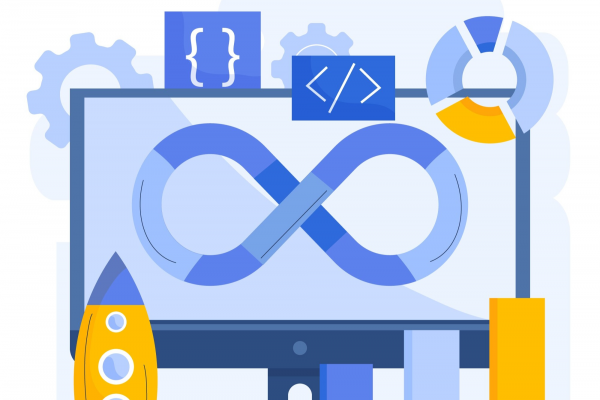Introduction:
In the dynamic realm of product development, 3D printing stands as a revolutionary force. This technology, also known as additive manufacturing, has reshaped the traditional landscape by swiftly and affordably transforming digital designs into physical prototypes. No longer confined to prolonged wait times, designers can iterate and evaluate concepts within hours, marking a paradigm shift in manufacturing agility and speed.
Defining 3D Printing:
3D printing involves layering materials to construct physical objects from digital designs, diverging from subtractive manufacturing. The process commences with a digital model created in Computer-Aided Design (CAD), sliced into layers, and meticulously constructed by the printer. This technology’s profound impact extends across diverse sectors, from aerospace to healthcare, democratizing manufacturing and unlocking possibilities for personalized products.
The basic principle of 3D printing:
At the heart of 3D printing lies the fundamental concept of layer-by-layer addition of material to construct an object. This marks a departure from traditional subtractive manufacturing methods that involve removing material from a solid block. The 3D printing process initiates with a digital model, typically crafted in a Computer-Aided Design (CAD) program. This digital model is then sliced into thin layers, and the printer meticulously follows these layers to build the object. This technique enables the creation of intricate designs that would pose challenges or be impossible with conventional methods.
The Significance of 3D Printing in Product Design
As 3D printing becomes a global standard, its influence extends across various sectors like aerospace, healthcare, fashion, and automotive. Beyond merely crafting objects, it redefines manufacturing, providing a sustainable alternative and enabling personalized products. Its transformative impact democratizes manufacturing, benefiting entrepreneurs and small businesses. The integration of 3D printing in product development instigates a paradigm shift in innovation approaches:
- Prototyping Agility: 3D printing makes prototyping agile, allowing teams to swiftly iterate, gather feedback, and refine designs.
- Reduced Risk: Rapid 3D printing minimizes the risk of costly design errors, enabling timely adjustments and resource savings.
- Innovation Acceleration: Easy experimentation fosters an innovative culture, empowering businesses to swiftly bring groundbreaking products to market.
- Competitive Advantage: Leveraging 3D printing for rapid prototyping provides companies with a competitive edge, enabling prompt responses to market dynamics and customer demands.
Rapid prototyping- Create, test, iterate in hours:
- Rapid Prototype Development: 3D printing excels in swiftly creating prototypes, eliminating the extended setup times of traditional manufacturing. This enables designers and engineers to produce parts or models directly from digital files, accelerating idea testing and design iteration for a dynamic development cycle.
- Precision in Prototyping: Advanced 3D printing technologies provide exceptional accuracy and precision, mimicking final products with intricate detail. This precision is especially critical in industries like aerospace or medical device manufacturing, where even slight deviations matter significantly.
- Iterative Prototyping: 3D printing empowers designers to adopt an iterative approach, facilitating rapid testing and refinement of concepts. This efficient process transforms ideas into tangible realities, supporting continuous improvement before mass production.
- Impact on Time-to-Market: Significantly reducing prototyping time, 3D printing profoundly influences a product’s time-to-market. Expedited prototype development ensures faster feedback and shorter development cycles, offering a crucial competitive advantage in today’s fast-paced market where speed often determines market share
What 3D printing can bring in the future:
- Process Optimization: Research aims to enhance 3D printing competitiveness by improving print speeds and material usage efficiency, addressing challenges in cost and speed compared to traditional manufacturing.
- Hybrid Manufacturing: Combining 3D printing with traditional methods like CNC machining boosts scalability by leveraging the strengths of both approaches.
- Generative Design Evolution: The evolution of design involves generative design, combining 3D printing and simulation. This synergy accelerates the engineering workflow, utilizing AI-driven applications for efficient design iteration and simplified simulations. The application pre-screens designs, selecting top contenders with high viability.
The transformation it has brought in the manufacturing and supply chain:
- Speed: 3D printing accelerates prototyping, transforming concepts into physical objects within hours or days, expediting the overall product development cycle.
- Cost-Effective: Traditional prototyping incurred high expenses for moulds, tooling, and skilled labor. 3D printing minimizes such costs and offers a budget-friendly solution, particularly beneficial for small and medium-sized businesses.
- Iterative Design: Digital file modifications translate to swift iterations in physical prototypes, enabling teams to evaluate and refine ideas without significant additional costs.
- Complex Geometries: 3D printing excels in creating intricate and complex geometries, surpassing the capabilities of traditional manufacturing methods and fostering innovative product designs.
- Reduced Material Waste: Unlike traditional methods, 3D printing’s additive process creates objects layer by layer, minimizing material waste and environmental impact.
- Customization: 3D printing facilitates easy customization, allowing businesses to produce personalized and tailor-made items that meet specific customer needs and preferences.
Why 3D Printing has not taken over the world—yet:
While 3D printing brings efficiencies across various industries, its extensive adoption is notable in product design, from consumer goods to automotive and aerospace. Companies like GE, SpaceX, and CAF prioritize weight savings and safety improvements on components. However, for 3D printing to reach its full potential, it must enter the multi-trillion-dollar volume manufacturing industry, necessitating a reduction in per-part costs. A balanced approach involves utilizing 3D printing for prototyping before transitioning to traditional manufacturing for optimal results.
Conclusion:
Revolutionize your product development journey with STL Digital’s cutting-edge capabilities! We empower your ideas to transcend the digital realm and materialize swiftly, eliminating the traditional barriers of time and cost. Our additive manufacturing services expertise, rooted in precision and agility, accelerates prototyping, reduces risks, and enhances innovation. With STL Digital, experience a seamless transition from concept to reality, gaining a competitive edge in the market. Elevate product design with intricate shapes and rapid iterations, ensuring the business stays at the forefront of manufacturing agility. Embrace the future of product development with unparalleled 3D printing solutions—where innovation meets efficiency.



